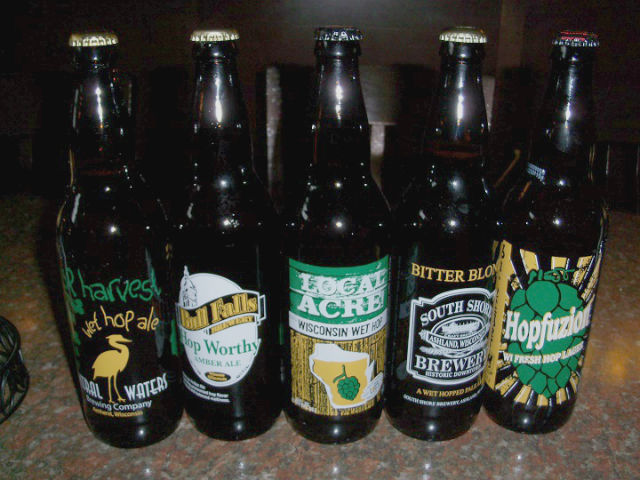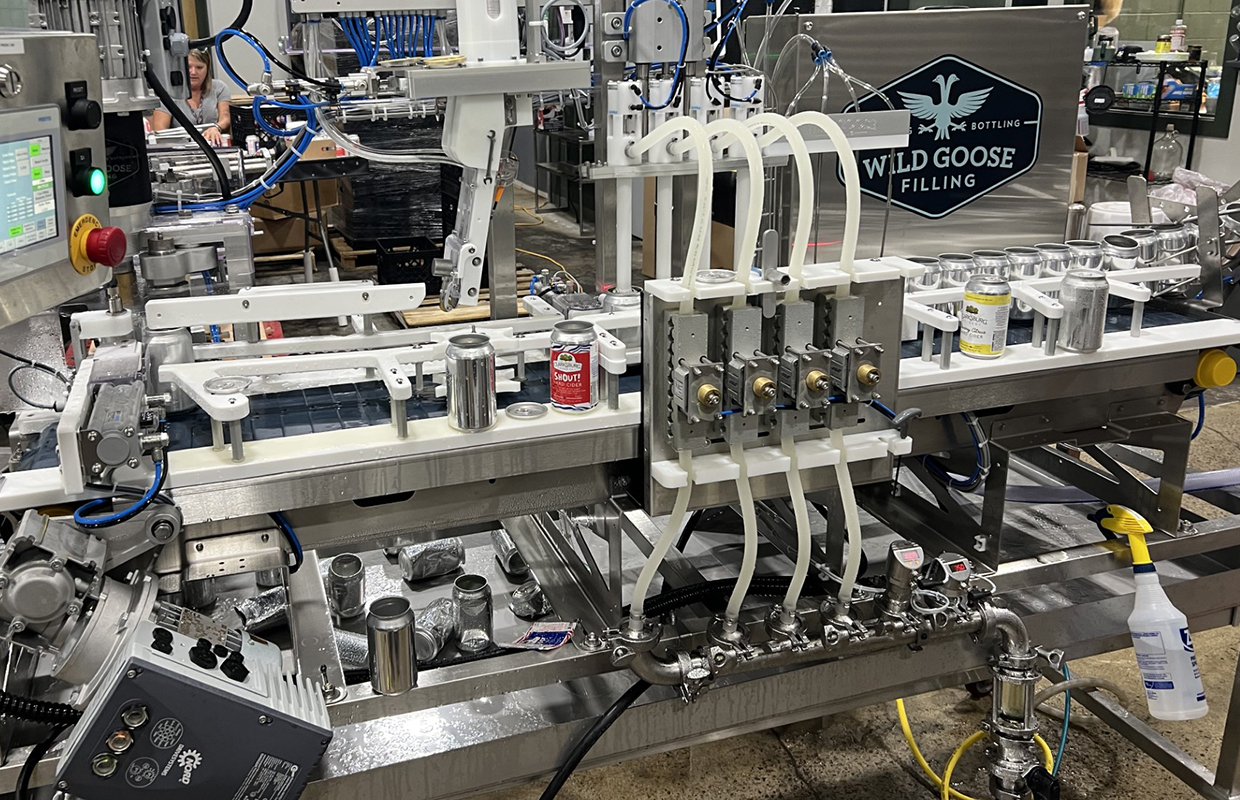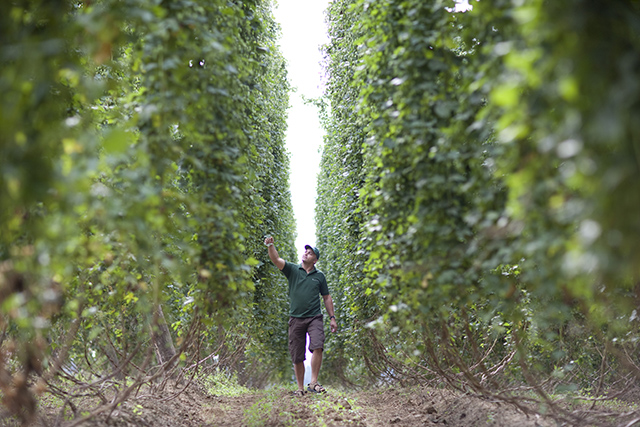
Establishing rapport within a state and building relationships seems to be much easier gained in craft brewing circles versus many other industries. Co-ops are a possibility for different sized breweries to be able to share price and volume of hops and grains that can be locally made as well.
That’s what happened in Wisconsin nine years ago as five breweries, five hop growers and two barley growers founded the Midwest Hops and Barley Co-op, now called the Wisconsin Hops and Barley Co-op. Currently, the co-op has four breweries, three hop growers and a barley grower in the co-op.
Jon Reynolds, the Managing Director of the co-op based in Onalaska, Wisconsin, is a 35-plus year brewing industry consultant, and acts as the ombudsman of the co-op since he has no financial interest.
He shared some lessons that the Wisconsin Cooperative overcame in establishing a collaborative effort in re-establishing hop and some additional barley growing in Wisconsin.
Reynolds did point out that the co-op deals mostly with hops because Briess Malting does most of the barley growing in Wisconsin, so the co-op focuses on growing hops. mostly.
SMALL ROOTS: The co-op started small and still is small when compared to the more than 140 breweries in the state. “This is common as you need to find the most committed craft brewers and most committed hop and barley growers,” Reynolds said. “There was “seed money” provided by the six original craft brewers and this was used primarily to fund rhizomes for the original growers to put in the ground to see if they would grow in the challenging Wisconsin climate. So far, so good.”
COMMON STOCK: The co-op needs to incorporate (in Wisconsin it’s state law) and shares of stock should be issued for each Brewer’s investment. Reynolds said the co-op has two classes of common stock — small brewer and large brewer — and each class pays a different fee. “If you look at the State’s Articles of Incorporation, if the co-op falls below certain levels of revenue and income, it can file for non-profit status,” Reynolds pointed out. “In our case, the revenue that is realized from the brewers, is almost entirely passed through to the growers with some surcharges paid to the administrator for managing the activities of the co-op. Therefore, taxes are negligible.”
LOOKING GOOD: The co-op also developed a logo that is used on all marketing, letterhead, invoicing and eventually website and social media.
HOP LIMITS: The average size of the hop farm is one to two acres, but the growers in the state have difficulty making a profit at this size. So, the brewers requested that the growers focus on just three hop varieties (Cascades, Magnums, and Willamettes), and requested that they expand their hopyards over time to drive their costs down and their hop yields up. “We now have one grower over five acres and one more over three acres,” Reynolds pointed out. “The five acre grower also added a hop processing system with a WOLF Harvester, multiple dryers, hammermill, pelletizer, and mylar bagging system.” Adding more craft brewers and growers has been discussed, but the hops that the growers have provided are good in quality, but low in quantity so there has been no need to add more brewers at this time.
 FRESHNESS: One of the benefits of local hop growing is the opportunity to use wet or fresh hops in the production of “fresh hop beers.” The marketing angles here offer the four craft brewers an opportunity to produce a similar package with a back label that shows all brewers participating in the co-op, with a link back to the growers who produced the hops.
FRESHNESS: One of the benefits of local hop growing is the opportunity to use wet or fresh hops in the production of “fresh hop beers.” The marketing angles here offer the four craft brewers an opportunity to produce a similar package with a back label that shows all brewers participating in the co-op, with a link back to the growers who produced the hops.
EXPERIMENT: The growers are constantly trying different and unique hop varieties in their hopyards. The West Coast proprietary hops are not available to the Wisconsin growers, so they look for new hop varieties and rhizomes that they can test and play with. Hops cultivators such as Sterling, Challenger, Centennial, Mt. Hood, Cashmere, Tahoma, Triple Perle and Pacific Gem are slated to be tested in the Wisconsin Co-op hopyards this year and in 2018.
SETTLE UP: The co-op makes every effort to pay growers within 60-90 days of delivery of the hops. That way, the growers try to match their revenue with their expenses in the year they were grown.
CONTROL: There are always pests (spider mites among others) and downy mildew to deal with. The growers learn every year how to balance between pest and mildew controls, along with watering to prevent drought and also irrigation to move out excess water from a deluge of untimely rain.
LOOKING WEST: Pricing is based on the West Coast’s pricing of hops. The Wisconsin brewers in the co-op agree to pay a small premium for Wisconsin-grown hops, but they won’t go higher on price increases than the price increases they realize from the West Coast hop producers. The price premium allows for higher cost of small-scale hop farming and lower production than the scale that West Coast hop farms have versus Wisconsin hop farms.
COMMUNICATION: The co-op holds both spring and fall meetings to share ideas, communicate hop forecasts, new varieties, hop pricing, membership and changes that the brewers would like to see from the growers.
Overall, Reynolds said this is a solid cooperative effort from both sides and the collaborative efficiencies realized by the growers from the first nine years of growing hops are now beginning to generate better performances in their bottom lines.






Be the first to comment